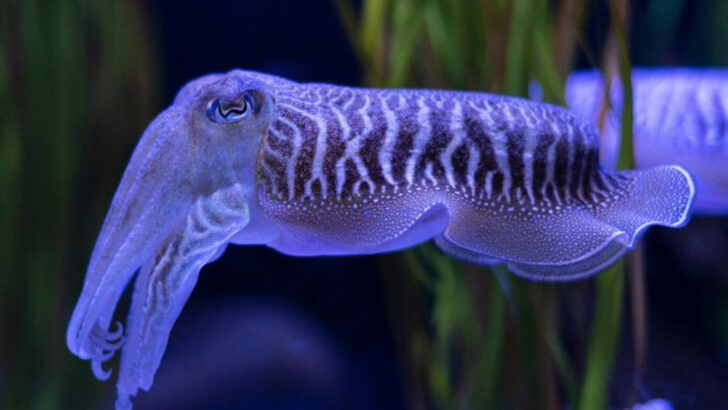In the realm of biological wonders, having blue blood is both a fascinating anomaly and a remarkable adaptation.
Unlike the typical red blood found in humans and most mammals, certain animals have evolved to have blue blood due to the presence of hemocyanin, a copper-based molecule, instead of hemoglobin, an iron-based one.
This unique characteristic aids in transporting oxygen in low-temperature or low-oxygen environments, proving advantageous for survival in specific niches.
Dive into the intriguing world of these ten captivating creatures and unravel the science behind their azure lifeblood.
Horseshoe Crab

The horseshoe crab, a living fossil, captivates with its ancient lineage spanning over 450 million years. Found along the Atlantic coast, its blue blood has revolutionized medical testing, crucial in detecting bacterial endotoxins. This crustacean’s blood contains hemocyanin, a copper-based molecule, giving it a distinctive blue hue.
Their carapace may seem intimidating, yet these creatures are harmless, thriving in shallow coastal waters. During spawning season, beaches teem with their presence, a spectacle of nature’s resilience.
Did you know? Despite their name, horseshoe crabs aren’t true crabs but are more closely related to spiders.
Octopus

The octopus, a master of disguise, intrigues with its intelligence and ability to change color. Its blue blood, rich in hemocyanin, enhances oxygen transport in cold ocean depths. This adaptation enables the octopus to thrive in diverse marine environments, from coral reefs to the ocean floor.
With three hearts, they pump blood efficiently, supporting their active lifestyle. These cephalopods exhibit problem-solving skills and are known for escaping enclosures in aquariums.
Fun fact: Some octopuses can even regrow lost limbs, showcasing remarkable resilience. Their mysterious, alien-like appearance continues to fascinate scientists and enthusiasts alike.
Cuttlefish
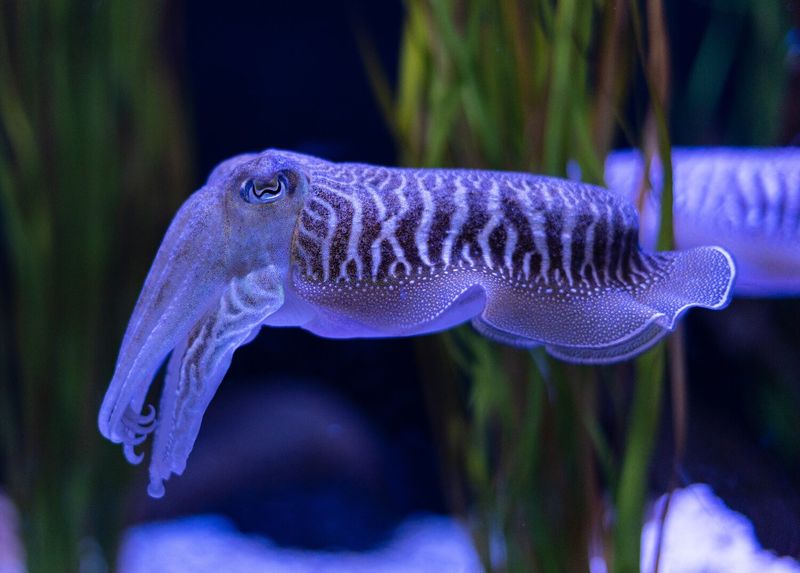
Cuttlefish, often dubbed the chameleons of the sea, mesmerize with their rapid color-changing abilities. Their blue blood, infused with hemocyanin, aids in surviving the ocean’s depths by optimizing oxygen delivery. This adaptation supports their active predatory lifestyle.
These cephalopods possess a unique internal shell called a cuttlebone, used for buoyancy control. Highly intelligent, cuttlefish demonstrate complex behaviors, including using tools and communicating through color.
In addition to their captivating appearance, cuttlefish are vital to marine ecosystems, balancing predator-prey dynamics. Their presence in art and culture underscores their enduring allure.
Spider

Spiders, with their intricate webs and varied species, are remarkable arachnids. Their blue blood, containing hemocyanin, differs from vertebrates, facilitating oxygen transport in their small bodies. This is crucial for their survival in diverse habitats, from forests to deserts.
These eight-legged creatures play a vital role in controlling insect populations, acting as natural pest controllers. Many spiders exhibit fascinating behaviors, such as ballooning to disperse their young or mimicking ants for protection.
Though often misunderstood, spiders contribute significantly to ecological balance, and their silk is an engineering marvel in strength and flexibility.
Scorpion
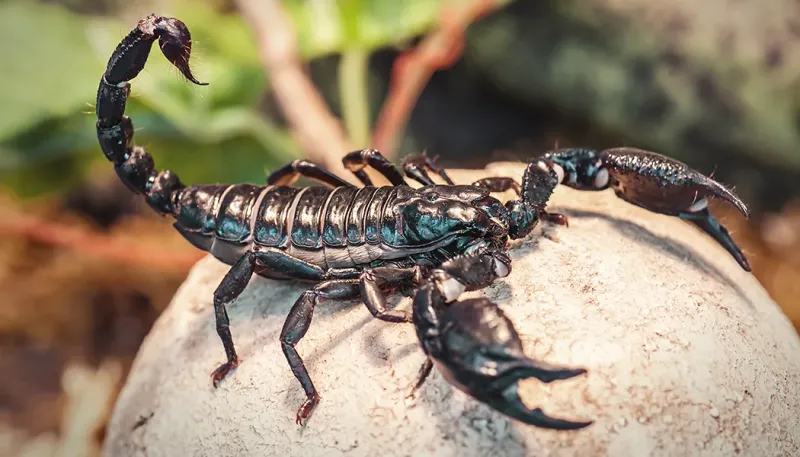
Scorpions, ancient and resilient, evoke a sense of wonder with their predatory prowess. Their blue blood, rich in hemocyanin, supports their ability to thrive in harsh, arid environments. This adaptation is vital for oxygen transport under extreme conditions.
Famous for their defensive stingers, scorpions are nocturnal hunters, preying on insects and small animals. They fluoresce under ultraviolet light, a trait that fascinates researchers and adventurers.
Despite their fearsome reputation, scorpions are generally non-aggressive, using their venom primarily for hunting. Their presence in folklore and symbolism reflects human fascination with these enigmatic creatures.
Lobster
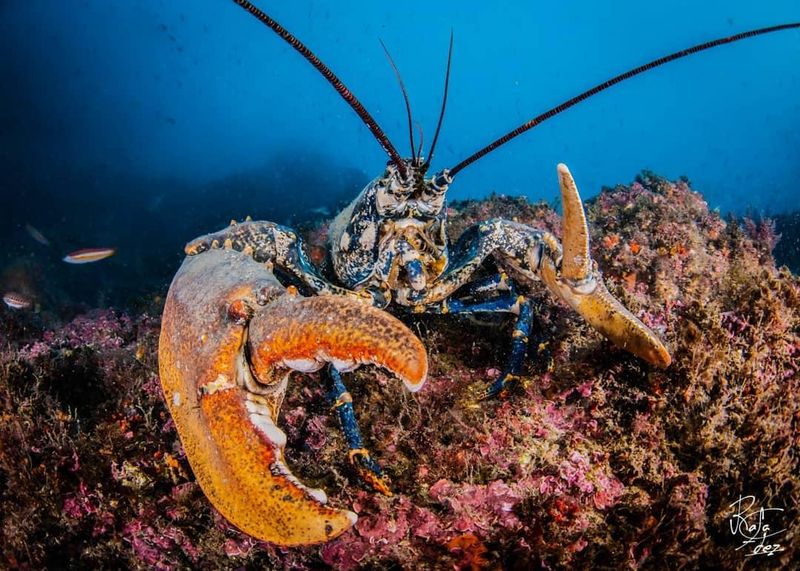
Lobsters, iconic crustaceans of the sea, captivate with their culinary appeal and biological quirks. Their blue blood, due to hemocyanin, is essential for surviving in colder ocean waters, effectively transporting oxygen.
These creatures possess impressive regenerative abilities, able to regrow lost claws and antennae. Lobsters communicate through chemical signals, adding to their underwater mystique.
Interestingly, lobsters were once considered peasant food before becoming a gourmet delicacy. Their complex life cycles and migrations add depth to their enigmatic nature, making them a subject of marine research and culinary arts alike.
Squid
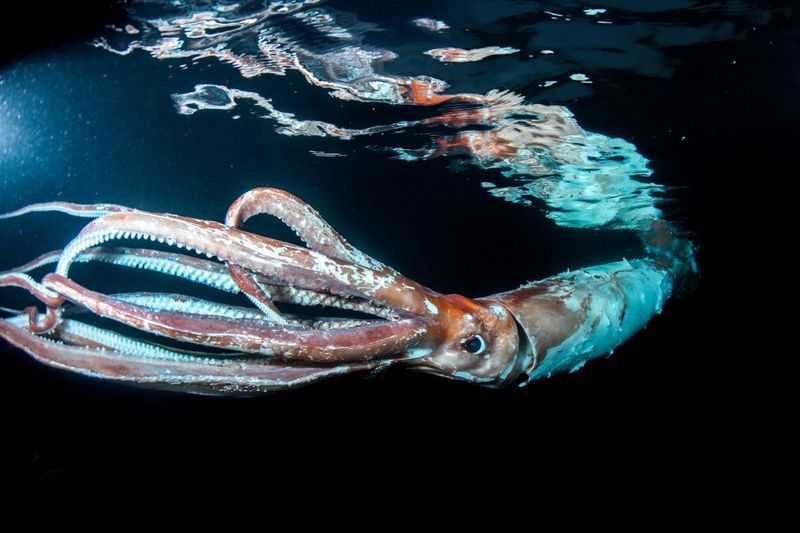
Squid, enigmatic denizens of the deep, fascinate with their agility and intelligence. Their blue blood, infused with hemocyanin, allows efficient oxygen transport in cold, oxygen-poor waters. This capability supports their fast, jet-propelled swimming.
These cephalopods are known for their ink defense mechanism, used to escape predators. Squid communicate through dynamic color changes, a spectacle of natural artistry.
Did you know? The giant squid’s eyes are among the largest in the animal kingdom, aiding in detecting faint light in deep waters. Squid continue to intrigue marine biologists with their mysterious behaviors and complex nervous systems.
Crayfish

Crayfish, often seen as miniature lobsters, are freshwater crustaceans with a spirited demeanor. Their blue blood, containing hemocyanin, facilitates oxygen transport in varied aquatic environments.
These creatures are known for their burrowing habits, creating intricate tunnels in streambeds. Crayfish play a vital role in maintaining aquatic ecosystems, contributing to nutrient cycling and serving as prey for larger animals.
Interestingly, crayfish can regenerate lost limbs, a testament to their resilience. Their presence in cultural folklore and festivals highlights their significance beyond biology, adding layers to their fascinating existence.
Snail
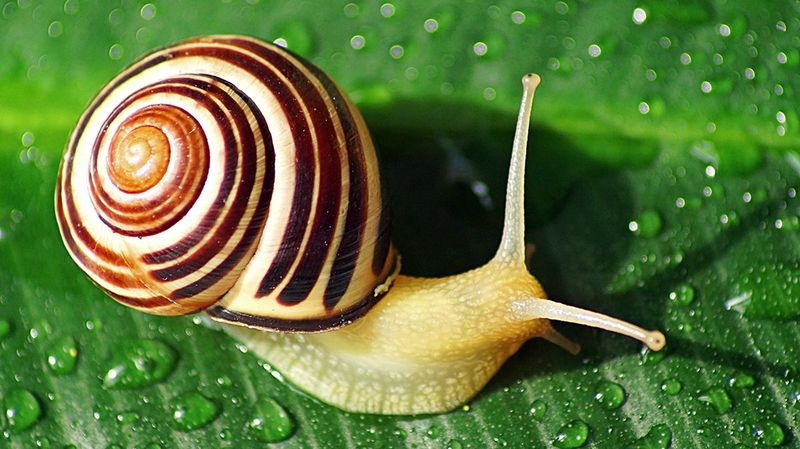
Unlike humans, who rely on iron-rich hemoglobin to carry oxygen (giving our blood its red color), many snails use hemocyanin, a copper-based molecule that turns blue when oxygenated.
This blue blood is especially common in marine snails and other mollusks, where oxygen levels can be lower and the cold environment makes hemocyanin more efficient than hemoglobin. While some land snails may have paler or almost colorless blood due to lower oxygen levels, the copper in their systems still plays the same role.
It’s just one more way these slow-moving creatures show how surprisingly complex and fascinating nature can be.
King Crab

King crabs, majestic and formidable, are sought after for their size and culinary value. Their blue blood, enriched with hemocyanin, is vital for surviving in frigid ocean environments.
These crustaceans undertake long migrations, navigating through icy waters with their powerful legs. King crabs are a delicacy in many cuisines, prized for their sweet, tender meat.
Despite their daunting appearance, king crabs play a role in marine ecosystems, often preying on smaller invertebrates. Their fascinating life history and economic importance make them a subject of interest for both scientists and seafood enthusiasts.

